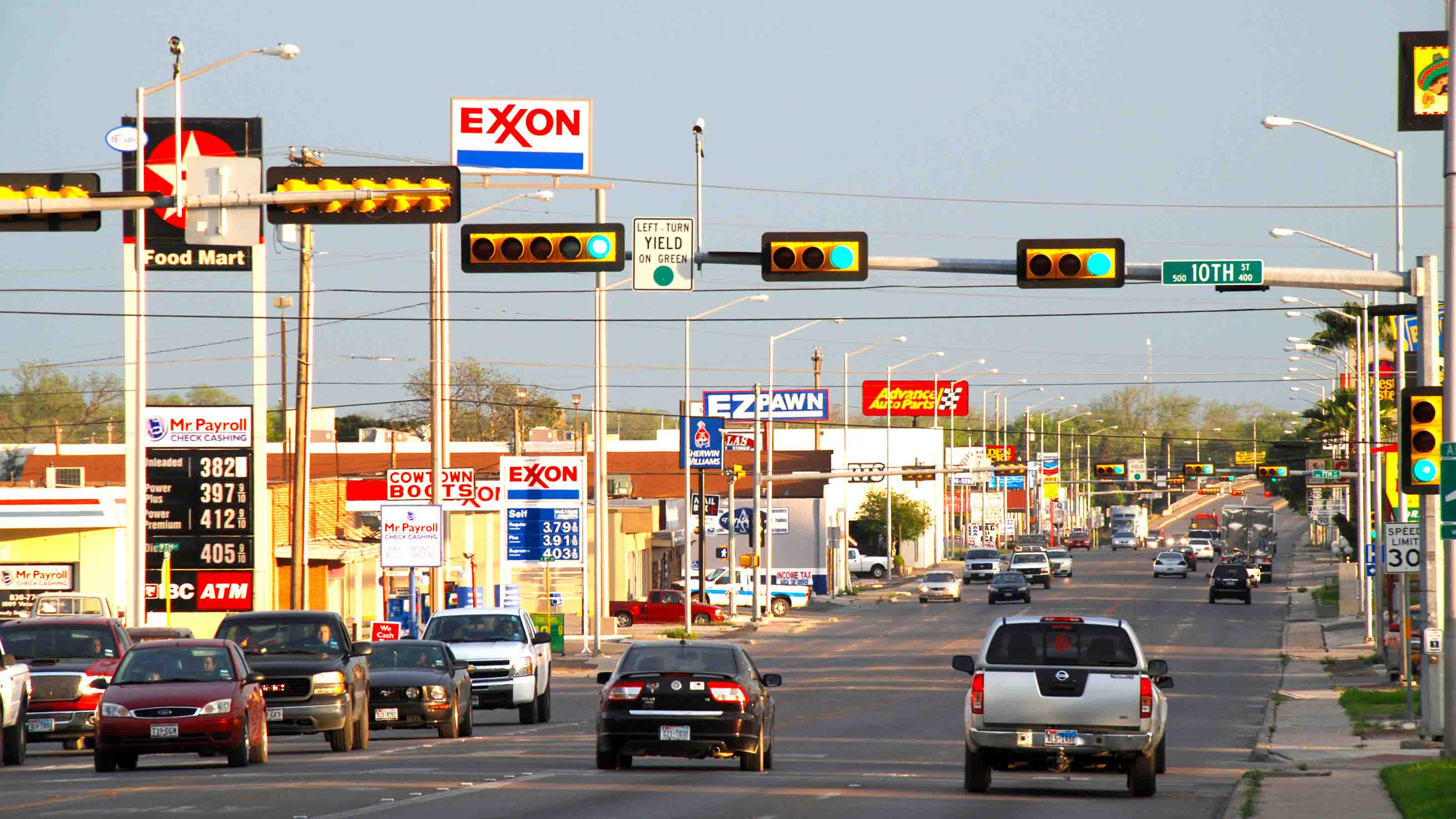PODCAST: High Gas Prices with The Kiplinger Letter’s Jim Patterson
Why are we paying so much more at the pump? How long will it last? What can you do? Plus: Congress is making changes to retirement-savings rules again.

Subscribe FREE wherever you listen:
Apple Podcasts | Google Podcasts | Spotify | Overcast | RSS
Links mentioned in this episode:
- SECURE Act 2.0: 14 Ways the Proposed Law Could Change Retirement Savings | Kiplinger
- How the SECURE Act Will Impact Your Retirement Plan | Kiplinger
- Kiplinger's Economic Outlooks: Energy Prices
- Weekly Petroleum Status Report - US Energy Information Administration (EIA)
- Gas-Saving Tips That Actually Work
- Electric Vehicles Take Charge in 2022
- 10 States with the Highest Gas Taxes
- 10 States With the Lowest Gas Taxes
Transcript
David Muhlbaum: Gas prices have shot up and consumers are feeling the pinch at the pump. We’ll talk with Jim Patterson, Managing Editor of the Kiplinger Letter and a long-time energy watcher about what’s behind the surge, when it might ease, and what drivers can do to cope. Also, Congress is fiddling with retirement savings rules. What should we expect? All coming up on this episode of Your Money’s Worth. Stick around.

Sign up for Kiplinger’s Free E-Newsletters
Profit and prosper with the best of expert advice on investing, taxes, retirement, personal finance and more - straight to your e-mail.
Profit and prosper with the best of expert advice - straight to your e-mail.
David Muhlbaum: Welcome to Your Money’s Worth. I’m kiplinger.com senior editor, David Muhlbaum, joined by my cohost, Kiplinger’s senior editor Sandy Block. How are you doing, Sandy?
Sandy Block: I’m good, thanks. Happy April Fool’s Day to you.
David Muhlbaum: Well, thank you. You know what’s another thing we’ve lost working virtually? Office pranks. I used to enjoy those a good bit and April Fool’s Day was a prime opportunity. Okay, well anyway, no joke. Those pranksters in Congress are messing with retirement savings rules again and I’m talking about SECURE Act 2.0 or rather Sandy, I’m going to ask you to talk about SECURE Act 2.0. The listeners have heard me grump about how uncreatively this bit of legislation is named and that’s going to force us to take a step back and explain the SECURE Act first which is going to eat into the time that we have to talk about the SECURE Act 2.0. So look, if your head is starting to spin, please go to the show notes. I’m going to put in an excellent explainer article about the SECURE Act 2.0. And if you’re like, retirement rules, whatever. Well don’t go away just yet because we’re going to come back with a great main segment about fuel prices and who doesn’t care about fuel prices?
David Muhlbaum: So, okay, Sandy. Let’s take a step back with these very inside the beltway terms. We’re talking about the rules that govern how you can save for retirement and then how those savings get treated from a tax perspective like when do you have to start taking money out? What happens if you want all this money to go to your heirs? We’re talking mostly about individual retirement accounts, IRAs, and those hold a ton of money on the aggregate. So people care — or should — about what happens to the rules.
Sandy Block: Right. And so sorry to bring the names back but in late 2019, Congress passed very quickly, in fact so quickly that some of us lost our breath catching up, without a lot of discussion, rules changes called the SECURE Act and that had some significant effects. And we spent a lot of time explaining those, including here on this podcast.
David Muhlbaum: Right. Although, I think that some of that was before my time on Your Money’s Worth. But you had the great Ed Slott on to cover the SECURE Act?
Sandy Block: Yes. And I have a feeling we’ll be having him on again. But we’ll put in the link to that one. So what we’re looking at now is a new set of changes that people have dubbed SECURE Act 2.0. That passed the House last week and there’s a good chance it’ll get passed by the Senate at some point and signed into law.
David Muhlbaum: What’s the elevator speech version of what’s probably a 400-plus page document?
Sandy Block: Oh yeah, yeah. It is a ton of provisions. But these are ... I’m going to just tick off the ones I think have the widest impact for retirees or people who are saving for retirement, kind of based on my mail. And number one is that if this is signed into law, retirees will be able to wait longer before they have to start taking required minimum distributions from their IRAs and other tax-deferred accounts. Currently, retirees are required to take the RMDs at age 72, and that age was actually increased in the SECURE Act. The SECURE 2.0 would increase the age to 73 in 2023, 74 in 2030, and 75 in 2033. And I think the argument for this is that if people got a late start, it gives them more time to build up tax-deferred savings until they have to start taking money out. This will be very popular.
David Muhlbaum: The basis of this scenario is someone who has enough money in retirement from sources outside their IRA that they don’t want to touch the IRA as long as possible?
Sandy Block: Right. Because you have to pay taxes when you take that money out. Now in reality, this is a fairly small group of very passionate people who can afford to wait that long to take money out of their IRAs. Because a whole lot of people have to take money out to live on. But there are people who have built up substantial amounts and they would like to postpone taking money out and, as I said, if you got a late start, maybe you worked until you were 70. Or maybe you’re still working in your 70s. You would rather wait to take that money out. So those people are going to benefit.
Sandy Block: And that leads to my second point which is another provision that will benefit what I would view as late starters. This will allow workers between the ages of 62 and 64 to contribute an additional $10,000 a year to 401(k) or other employer-offered plans. That’s up from the current catch-up contribution for people who are 50 or over of $6,500. So if you got a late start working or you’re just making so much money that you can save it all, you will like this provision because money that you put in your 401(k), eventually it’ll be taxed but it’s not taxed when you’re working. And so it’s a big tax break. So I think, again, I think people who got a late start and are really scrambling to save enough, this will benefit them. The SECURE-
David Muhlbaum: So again, the income profile you need for that is that you weren’t making enough money or you weren’t saving enough money.
Sandy Block: Right. Right, right.
David Muhlbaum: Which is a distinction there. Now you are making enough money and you’re trying to make up for lost time.
Sandy Block: Exactly. And you would have to be making a lot of money because you can already put more than $26,000 in your 401(k). So we’re talking big bucks here. But there are some people who might ... At least it gives the people who have the ability to save that much the option. And the bill would also increase the catch-up contributions to IRAs which have been stuck at $1000 since 2006. They would be indexed to inflation. So gradually, the amount that you can put in an IRA which benefits people who maybe don’t have a 401(k) at work. That would go up, too.
And the final thing I wanted to mention because it’s just very interesting to me is that this bill would create a national, online database to help people track down 401(k) plans that they left with a former employer. There’s apparently billions of dollars in these orphan 401(k)s. Probably small amounts that people changed jobs, left behind, moved on. But it’s still money. It’s still money that you should be saving for retirement. And it might not necessarily even be your fault. Sometimes, maybe you left a company, you left the 401(k) there thinking you’d go back and get it and then it merged or it went out of business or something like that. So I think this is a very useful thing. Young people in particular change jobs a lot and you’re not required to move your money out of your 401(k) when you leave a job so I think there’s some money out there to be had. So I think it would be a very useful tool for people to plug their name in and see if there’s money sitting around that they forgot about.
There’s lots, lots more in this bill that we will be delving into, particularly after it’s signed into law. But those are just a couple things to think about.
David Muhlbaum: Okay, yeah, right. And Sandy, those details, we’ll be talking about them but they’re also going to be in that link that we’re going to put in the show notes. We know there’s a lot in SECURE Act 2.0. Please, check it out. We’ve got the detail right there for you.
David Muhlbaum: Coming up next, fuel prices. We’re going to talk about why they’re high, why they’re going to stay high, and what you can do about it with Jim Patterson from the Kiplinger Letter. Stick around.
High Gas Prices with The Kiplinger Letter’s Jim Patterson
David Muhlbaum: Welcome back to Your Money’s Worth. Joining us today is Jim Patterson, the managing editor of the Kiplinger Letter, who you last heard here over a year ago to tell us his publication’s forecast for the year 2021. And while as managing editor, he has oversight of the Letter and all of its coverage, he also brings subject matter expertise to the table and he has, for almost a decade now, or maybe over a decade now, provided weekly updates on the direction of energy prices for Kiplinger’s Economic Outlooks. And those you can see for free, online.
David Muhlbaum: So Sandy, last episode you and I, we had gas prices on the mind and we wanted to find a qualified guest. Well, we have one right here in-house, that being Jim. So welcome back, Jim. Thanks for joining us and putting your toddler in timeout or whatever you needed to do to find the time.
Jim Patterson: Thank you, guys. Good to be back. And yeah, my son, George, is hurting these days from the high diesel prices we’re seeing these days. He’s going to have to put his toy school buses into storage, I think.
David Muhlbaum: Oof, you’re teaching him the hard lessons early, I see.
Jim Patterson: He better learn sooner rather than later.
David Muhlbaum: Okay, well prices are going to come down?
Jim Patterson: No, the short answer is no, David. I’m afraid we’re not going to see much in terms of relief at the gas pump for consumers. I wish I could say yes, but I don’t think that’s going to be the case.
Sandy Block: Well I guess that’s not surprising but it is definitely depressing because as we’ve discussed gas prices are something that’s front of mind for anybody who’s got a car and maybe even if you ride the bus.
Jim Patterson: Right. Gas prices are maybe the most widely watched price in our entire economy. We literally have them on giant signs on every street corner. So especially when they go up a lot really quickly, everyone’s very aware of them. They know they’re paying more at the pump. They really feel it. They really feel the hit to their spending power. It’s not necessarily the biggest expense for most households, but it’s one everyone is keenly aware of. So it really affects consumer psychology a lot.
David Muhlbaum: And yet, gas prices ... I mean they’ve had a really sharp run up but they’re not a record, right?
Jim Patterson: Right. When you adjust for inflation, the record would actually be about $5.25 in today’s dollars. That took place in the summer of 2008, you may recall, right before the Great Financial Crisis hit. Energy prices skyrocketed.
David Muhlbaum: And then they crashed.
Jim Patterson: And then they crashed, right. Because suddenly, the economy went into a tailspin and demand for fuel went way down so we went from really, really high gas prices to some of the lowest gas prices we’ve seen in recent memory.
David Muhlbaum: Mm-hmm. But, giive us a little more on your near-term forecast, what you’ve got. We’re not seeing a crash this year, right?
Jim Patterson: No, no. We’ve had this tremendous spike; prices had been going up very steadily for over a year now and when Russia invaded Ukraine, that caused a lot of concern in oil markets because Russia’s such a big exporter of petroleum. So gas prices went from rising to skyrocketing, I think is a fair term. So we’re at currently about $4.24 a gallon for regular unleaded for the national average. And granted, state prices vary a lot but just talking about the nation’s average as a whole, we’re at about $4.24. And we’ve been at that level for over a week now, actually staying very close to that $4.24, $4.25 mark. And unfortunately, I don’t see them coming down much, if at all. If anything, prices are probably going to take another leg higher as spring gets here. People are going to start driving, they’re going to go on vacations. That’s the normal seasonal pattern.
David Muhlbaum: The traditional seasonal pattern.
Jim Patterson: Right. Vacation season rolls around, people pack up the car for road trips, demand for fuel goes up. Unfortunately, that will probably add some more to these already very high prices we’re seeing.
Sandy Block: Everything that I’ve seen in red, Jim, suggests that even with prices rising, there’s just so much up-demand and that in turn keeps prices high, right? People aren’t put off by these high prices?
Jim Patterson: Exactly right. It does seem like there’s a lot of evidence for what you’re saying, Sandy, that people want to get out. They want to take the beach trips or whatever that they may have been deferring the past couple of years. I see it in the weekly Department of Energy data that gets released. You can see stats on fuel consumption. And it’s going strong at a time of year where we’re late March, it’s not quite spring or not quite warm travel season yet in a lot of the country. Demand usually isn’t very strong at this time of year but it’s looking pretty good right now. And gas prices at $4, $5-plus dollars per gallon don’t seem to be putting people off right now.
David Muhlbaum: So people complain but they don’t necessarily change their behavior that much. But Lord, they sure do complain. I mean there’s a lot of pressure on politicians and others to "do something."
Jim Patterson: Right, yeah. Of course, there’s a lot of calls for the government to do something, somehow. We’ve seen a lot of what I would call stop-gap solutions. The federal government is releasing crude oil from our strategic petroleum reserve which is a series of underground storage facilities where we have stored a lot of oil in case of some sort of emergency. I don’t know if this really qualifies as an emergency but for politicians it’s an emergency when gas prices go up. So we’re releasing a lot of that stored oil to try to make up for what is being lost from Russia. We’re seeing some states, as Sandy mentioned, instituting gas tax holidays and that might help a little bit but it depends on whether the gas stations actually lower their prices in accordance with that or if they try to pocket some of those savings by keeping prices higher. It’s actually really debated amongst economists what share of state gas taxes are paid for by the motorist versus by the sellers of the fuel. We don’t really know. So in other words, if your state tax gas goes away, don’t expect to see the full amount come off the price at the pump.
Sandy Block: Although, and maybe David, you have some insight on this. In Maryland, are you seeing prices come down since the bill with the gas tax holiday was signed into law?
David Muhlbaum: I did, but the question... I couldn’t tell you because I don’t remember what the price was before. If it was exactly that 36-cent margin. And I think that’s what Jim is getting at, is that there’s a little cushion in there for somebody.
Sandy Block: Well exactly because if demand is still high, they don’t really have a lot of incentive to pass the savings on to consumers, right, Jim?
Jim Patterson: That’s right, yes. And actually, I was just looking at the data for Maryland and the price of gas in Maryland today is actually higher than it was a week ago. So I don’t think we’re seeing too much in the way of savings yet. The reality is there’s not a whole lot, whether it’s the state government or the federal government, there’s not a whole lot anyone can do in the immediate term to really lower prices. But you will see politicians try. There’s talk in California about sending out rebate checks, essentially, to every household with a car. That might sound nice to voters but it’s not really going to change the underlying dynamics of the oil industry.
David Muhlbaum: Will they be sending them out to houses with electric cars?
Jim Patterson: I read that they will be, yes.
Sandy Block: So Jim, basically what you’re telling us is that the options for lowering oil prices are pretty limited. But for people who still have to drive, what options do consumers have?
Jim Patterson: That’s a good question, Sandy but I’m going to turn that one over to David as the resident Kiplinger car guy. David, you just did something on gas mileage right?
David Muhlbaum: Okay. Well the guest is turning the tables on the host. But yeah. Yeah, I wrote something with the title, Gas Saving Tips That Actually Work. You see, I was a wee impressionable one during the gas price crises of the 1970s and 1980s. And so I remember the era when MPG and OPEC were the acronyms on everyone’s lips. Back then, the real price of gas doubled and it stayed high for years. So getting better fuel mileage was a really big thing. And that led to a bunch of gas-saving tips and myths.
So I wanted to make a list of ideas that don’t violate the laws of physics, compromise safety, or insult your intelligence. You know, ideas that work. So hey, I’ll put a link in the show notes, you bet.
Sandy Block: I’m just curious, David, what are some of the myths? Remember, I’m old enough to remember this too and people, if you stayed up late on nighttime TV, they would advertise these devices. Do you remember that?
David Muhlbaum: Yes, the gadgets. Things like magnets for the fuel lines, little fan blades to put above your carburetor and potions to put in the tank. Well those are gone now, thankfully. Oh, here’s a myth that lives on. The idea that you should buy gas in the morning when it’s cooler out because you’ll get more gas if it’s cold and the density is higher. Like most myths, it’s not totally crazy. There’s some physics that make sense in there. But the reality is, the gas you put in your car is coming from a tank way in the ground and the temperature’s going to be close to constant. The air temperature doesn’t matter so that’s one.
Sandy Block: Okay, but you also mentioned electric cars and even though there’s still a small segment of the market, as you pointed out in your story in Kiplinger’s Personal Finance Magazine, there are a lot of automakers are rolling them out. So is this a good time to buy an electric car? Is that one of your tips?
David Muhlbaum: No. Certainly, electric car owners have ever more reason to be smug right now and they’ll let you know that they’re not buying any gas. But yeah, an electric car will save you money on gas. It’s obvious on the face of it. The question is, do they save you money? And that’s way more complicated and I don’t think that for anyone looking to save money on gas, the answer is to go out and buy an electric car. Now, if you’re in the market for a car, sure, obviously gas prices are a major factor in the equations you need to run to figure out if an electric car is a money-saver for you. But it’s not easy and it’s not a sure thing for everyone. Basically, you got to drive a lot of miles to recoup that.
Sandy Block: Right. Well the other thing, and I’m going to turn back to Jim on this one. I’ve been doing a deep dive into state gas taxes and the thing that just really jumps out at anyone who looks at a map of the U.S. is the huge variation in gas prices in the country. And I think a lot of that has to do with gas taxes. Could you talk a little bit about how much a variation there are? I think the reason I’m asking that is if you’re driving cross-country, it does seem like it could save you money to wait until you’re in a lower-price state before you fuel up. But why is there such a huge difference in the price of gas?
Jim Patterson: You hit that nail on the head, Sandy. It’s really largely a tax story. The tax that different states levy on fuel really varies a lot. Some states, it’s really minimal, some states it’s a really big chunk of the whole price that you pay. There’s also some regulatory issues that play a role. Some states, like California, have really strict standards for the formulation of the gas that goes into cars there for air pollution reasons and it can be very difficult for refiners to make that fuel. So there’s maybe not a lot of fuel being imported to a state like California from, say the Gulf of Mexico.
And then there’s issues of where the pipelines are and where they aren’t. Some parts of the country, it’s much easier to move gas around by pipeline or by boat. Other places are more remote, hard to keep supplied. So it’s a combination of taxes and logistics, I would say, and regulation.
Sandy Block: And I’m here to tell you, and David knows this, too, because I think he worked on some stories about the highest and lowest gas taxes in the country. Alaska has the lowest gas tax at $0.15. Unfortunately, that’s probably not going to be worth your while to gas up there because-
Jim Patterson: That’s a long detour, yeah.
Sandy Block: It’s a long detour.
David Muhlbaum: And most of the ... When you see a car in the lower 48 with Alaska tags on it, the funny thing of it is, it probably didn’t even drive here. It came on a boat.
Jim Patterson: Probably.
David Muhlbaum: The pipeline thing, it was almost a year ago that we had this drama when it was Russian hackers, I think. They took down the Colonial Pipeline here on the East Coast. That’s a gasoline supply for a lot of the Southeast and we had real, all-out shortages.
Jim Patterson: Right. That’s a major fuel artery that supplies a lot of the Southeast and the Mid-Atlantic. It was hit by hackers last spring. I personally saw lines forming at gas stations right in my neighborhood. Actually, a lot of the news reports showing pictures of long lines at gas stations were taken on the road that I live on here in Alexandria. There must be a lot of photographers for AP or whoever who live around here. But yes, that was a huge blow to this part of the country’s fuel supply. And it shows just how vulnerable we are if something gets taken offline, even for a few days.
David Muhlbaum: That was the whole people putting gas in plastic bags scenario.
Sandy Block: Yes.
Jim Patterson: That was a little scary. People were putting gas in things they shouldn’t be putting gas in.
David Muhlbaum: Right. The government had to tell you not to put gas in plastic bags. But you know, I don’t let the government tell me what to do with anything, so-
Jim Patterson: I’m going to put my gas where I want to put my gas, darn it.
Sandy Block: I do remember though in the 70s stories and I remember a friend of mine telling never to tell anyone this, that his friend buried gas in their yard. And I always wonder if some of that’s still out there.
David Muhlbaum: Oh my God. Now they live on a Superfund site.
Jim Patterson: Yeah, probably long since seeped into the ground and poisoned the soil.
Sandy Block: Yeah, probably.
David Muhlbaum: Great.
Sandy Block: But that is a question, Jim. I mean, again, referring to the 70s and this speaks to my age, are we at any risk of -- we know gas is costing more -- is there any risk in all of this scenario of shortages?
Jim Patterson: I think there is probably a pretty good chance of at least some limited shortages. And I don’t want to sound alarmist about this. I’m emphasizing the word limited but especially this summer, if we have a lot of people driving, going on vacation, there might be parts of the country where some stations are running low or running out. And it’s not because of a lack of gas itself. Our stockpiles are not that low. We have enough gas in storage and enough crude oil, et cetera. But it can be difficult to get enough truck drivers to drive the tanker trucks to resupply those gas stations when demand is high. There were some instances of that last summer. A source of mine warned me that that would be a problem and it did crop up in a few places. And it’s places you would expect where people are going on vacation or beaches or resort sort of areas. Places where there might not be a whole lot of gas stations. And then suddenly, there’s a lot of demand and maybe there aren’t enough tanker trucks to get out there to fill up those stations again.
So I think that if nothing else, people should be alert for that possibility when they’re going on vacation this summer. If they’re going somewhere that’s a popular destination, a lot of cars on the road, that could happen. I don’t think we’re talking about the 70s where we have gas rationing and things like that, genuine shortages. But there could at least be some, I would call them spot shortages.
Sandy Block: Spot shortages, yeah, okay.
David Muhlbaum: So we’ve been throwing around oil prices and gas prices kind of loosely but as Jim can tell us, that’s hazardous because there are very specific prices for oil depending on what kind, where it’s delivered, that sort of thing, what’s it, West Texas Intermediate is one of the terms, I believe.
Jim Patterson: Right. That’s the one you often see cited for the U.S. That’s considered the U.S. benchmark for crude oil.
David Muhlbaum: But gas prices, well we’ve talked about regional variations and all that but, gas prices are like what I paid for gas. What did it cost to fill up last week. Anyway, what I’m trying to get at is that one of the things that people sometimes fixate on is the lag-time between movement in oil spot price and what they pay at the pump. It’s kind of similar to what we spoke of before when perhaps a state implements a gas tax holiday and then that doesn’t show up. And anyway, so oil prices, they come down from a peak but gas prices stay stubbornly high. And the consumer scratches his chin and says, "Well that ain’t right." What’s happening?
Jim Patterson: That’s a good question, David. I think that to some extent, it’s gas station owners who paid X amount for a delivery of fuel and they’re not going to be rushing to lower their prices even if the spot market price for crude oil comes down. There may also be-
David Muhlbaum: Because they’ve got 2,000 gallons sitting in the front yard.
Jim Patterson: Right, right. And they paid almost as much as you, the consumer, paid. There’s not a big difference between what the station paid to take delivery of that load of fuel and what they’re going to charge you. There’s not a big margin, in other words, they’re not making much of a profit here. Actually, gas stations don’t make very much money from selling gas. They mostly make their money from selling snacks and drinks and things like that that people buy when they stop for gas. So it’s a low margin business. They’re at the mercy of the markets as well. It might be a big loss for them to quickly cut their prices after they paid a lot for, as you said, 2,000 gallons of more expensive fuel. And there’s always some certainty about whether prices are going to keep dropping so they might be hesitant to really lower their prices. Until they see their competitors down the street doing it.
David Muhlbaum: Mm-hmm (affirmative). And I’ve seen some lobbyists, too, for the convenience stores saying, "Hey, we don’t immediately jack up our prices either. We don’t bounce up with the spot price of oil. So cut us some slack on both sides, please."
Jim Patterson: Consumers tend not to complain when prices come down a lot.
Sandy Block: It sounds like what you’re saying is we won’t see gas prices come down until there’s a prolonged drop in overall oil prices.
Jim Patterson: Right. I mean we already had very expensive oil prices before the Russian invasion of Ukraine and then that added what I would call a risk premium to the price of crude oil. And even if peace broke out tomorrow, oil would be unlikely to really drop a lot in price. Global oil market was already very tight. There wasn’t a lot of what’s called spare capacity meaning extra production that could be brought online quickly to meet extra demand. Demand has been coming back faster than supply has been coming back since the pandemic when global oil consumption really cratered. A lot of production was shut down. It’s a slow process to bring oil production back online once it’s shut down. So I think this is a case of supply struggling to keep up with demand already and then we have this tremendous geopolitical shock from the Russian invasion.
So yeah, unfortunately Sandy, I think oil prices are going to stay high. I think that means that we, the consumer, are going to continue to pay high prices at the pump. The question maybe is, how high are we talking about? $4 a gallon or $5 a gallon? As I said earlier, we’re about $4.24 right now. I think there is a real possibility we could see a peak sometime this spring or summer, close to $5 again. And again, I’m talking national average. I know some states are already above that point but if you’re following the national average, I think we could be talking about a number that starts with a five sometime this spring or summer. Because as we’ve talked about, demand is really strong; supply is struggling to keep up. Things could get worse in Ukraine before they get better. We could see more Russian oil being cut off from the global market. So I wouldn’t rule out the possibility that we go a good bit higher sometime this spring or summer.
David Muhlbaum: Well, it’s not good news but it is informed news. And so I think we’ll wrap up there with Jim’s précis of his forecast because you know what? He’s got to write another one because Kiplinger’s Economic Outlook on energy prices is updated weekly. So we’ll put in a link to that. You can check it out online. You could bookmark it. You could keep coming back to see what Jim has forecast for fuel prices, energy prices, looking ahead.
David Muhlbaum: Thanks for joining us, very much, Jim. We appreciate your insights.
Jim Patterson: My pleasure, guys, I enjoyed it.
David Muhlbaum: That will just about do it for this episode of Your Money’s Worth. If you like what you heard, please sign up for more at Apple Podcasts or wherever you get your content. When you do, please give us a rating and review. And if you’ve already subscribed, thanks. Please go back and add a rating and review if you haven’t already. To see the links we’ve mentioned in our show, along with other great Kiplinger content on the topics we’ve discussed, go to kiplinger.com/podcast. The episode’s transcripts and links are all in there by date. And if you’re still here because you want to give us a piece of your mind, you can stay connected with us on Twitter, Facebook, Instagram, or by emailing us directly at podcast@kiplinger.com. Thanks for listening.
Get Kiplinger Today newsletter — free
Profit and prosper with the best of Kiplinger's advice on investing, taxes, retirement, personal finance and much more. Delivered daily. Enter your email in the box and click Sign Me Up.

In his former role as Senior Online Editor, David edited and wrote a wide range of content for Kiplinger.com. With more than 20 years of experience with Kiplinger, David worked on numerous Kiplinger publications, including The Kiplinger Letter and Kiplinger’s Personal Finance magazine. He co-hosted Your Money's Worth, Kiplinger's podcast and helped develop the Economic Forecasts feature.
-
 The AI Doctor Coming to Read Your Test Results
The AI Doctor Coming to Read Your Test ResultsThe Kiplinger Letter There’s big opportunity for AI tools that analyze CAT scans, MRIs and other medical images. But there are also big challenges that human clinicians and tech companies will have to overcome.
By John Miley Published
-
 The Best Places for LGBTQ People to Retire Abroad
The Best Places for LGBTQ People to Retire AbroadLGBTQ people can safely retire abroad, but they must know a country’s laws and level of support — going beyond the usual retirement considerations.
By Drew Limsky Published
-
 PODCAST: Tax Breaks for College Finance with Kalman Chany
PODCAST: Tax Breaks for College Finance with Kalman ChanyPaying for College Paying for (ever-pricier) college is a challenge that this consultant meets head on with highly specific guidance.
By David Muhlbaum Published
-
 PODCAST: Car-Buying in an Inflated Market with Jenni Newman
PODCAST: Car-Buying in an Inflated Market with Jenni NewmanBuying & Leasing a Car With cars both scarce and expensive these days, what to do if you want – or need – a new ride? Car-buying strategist Jenni Newman of Cars.com shares some tips. Also, more on the magical 9% savings bond.
By David Muhlbaum Published
-
 PODCAST: How to Find a Job After Graduation, with Beth Hendler-Grunt
PODCAST: How to Find a Job After Graduation, with Beth Hendler-GruntStarting Out: New Grads and Young Professionals Today’s successful job applicants need to know how to ace the virtual interview and be prepared to do good old-fashioned research and networking. Also, gas prices are high, but try a little global perspective.
By David Muhlbaum Published
-
 PODCAST: Is a Recession Coming?
PODCAST: Is a Recession Coming?Smart Buying With a lot of recession talk out there, we might just talk ourselves into one. We take that risk with Jim Patterson of The Kiplinger Letter. Also, dollar stores: deal or no deal?
By David Muhlbaum Published
-
 PODCAST: This Couple Tackles Love and Money as a Team
PODCAST: This Couple Tackles Love and Money as a TeamGetting Married Fyooz Financial, the husband and wife team of Dan and Natalie Slagle, have carved out a niche advising other couples with the money questions that come with pairing up. Also, where is this troubled stock market headed?
By David Muhlbaum Published
-
 PODCAST: Which Documents to Keep, Which to Shred and Which to Scan
PODCAST: Which Documents to Keep, Which to Shred and Which to Scanhome insurance A speedy recovery from disaster can depend on your recordkeeping. Kiplinger’s Personal Finance writer Rivan Stinson tells us how to get our papers in order.
By David Muhlbaum Published
-
 PODCAST: The Future of Certified Financial Planners with Kamila Elliott
PODCAST: The Future of Certified Financial Planners with Kamila ElliottBecoming an Investor CFPs will tell you (and we’d agree) that not all financial advice is the same. We talk with the chair of the CFP Board about what she’s doing to preserve her organization’s brand and extend its reach. Also, the right way to file your tax returns for free.
By David Muhlbaum Published
-
 PODCAST: There’s No Escaping Your Credit Score (So Make It Count)
PODCAST: There’s No Escaping Your Credit Score (So Make It Count)Financial Planning Kiplinger’s credit expert, Lisa Gerstner, joins us to talk credit strategy. Also, a number of new electric cars hit the market this year. Will one work for Sandy?
By David Muhlbaum Published
